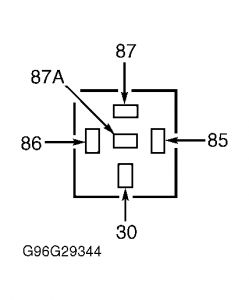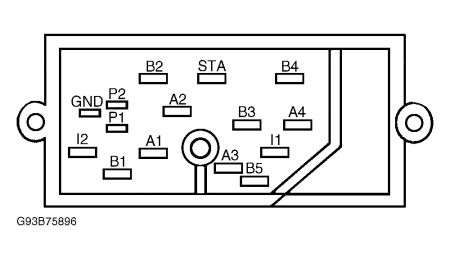Try cranking engine a couple of times by hand .. with wrench on crank pulley?? is it free ?
ENGINE DOES NOT CRANK OR RELAY CLICKS
Voltage To Starter Relay
Using DVOM, check voltage between starter relay terminal No. 30 and ground. See Fig. 1 . If 12.5 or more volts exists, go to next step. If less than 12.5 volts exists, repair or replace battery to starter relay cable. Recheck system operation.
Check Voltage To Starter Motor Solenoid
Using DVOM, check voltage between starter motor solenoid "B" terminal and ground. If 12.5 or more volts exists, go to next step. If less than 12.5 volts exist, repair Red wire between battery and starter solenoid. Clean and tighten battery terminal connections. Recheck system operation.
Manually Jump Starter Motor
Using jumper wire, connect one end to positive battery terminal and with other end, momentarily touch starter solenoid "S" terminal (Black wire). If solenoid engages, go to next step. If solenoid does not engage, replace starter solenoid. Recheck system operation.
Check Starter Motor
Using jumper wire, connect one end to positive battery terminal and with other end, momentarily touch starter solenoid "M" terminal. If starter engages, go to next step. If starter does not engage, replace starter motor. See STARTER MOTOR under REMOVAL & INSTALLATION. Recheck system operation.
Check Continuity Of Circuit Between Starter Relay &
MD11Starter Solenoid Disconnect starter relay. Disconnect starter motor solenoid relay switch. Using DVOM, measure resistance of Black wire between starter relay and starter solenoid. If resistance is less than 5 ohms, replace starter relay. If resistance is more than 5 ohms, repair high resistance in Black wire between starter relay and starter solenoid. Recheck system operation.
Fig. 1: Identifying Starter Relay Terminals
Courtesy of FORD MOTOR CO.

SPONSORED LINKS
Friday, December 5th, 2008 AT 1:39 PM



